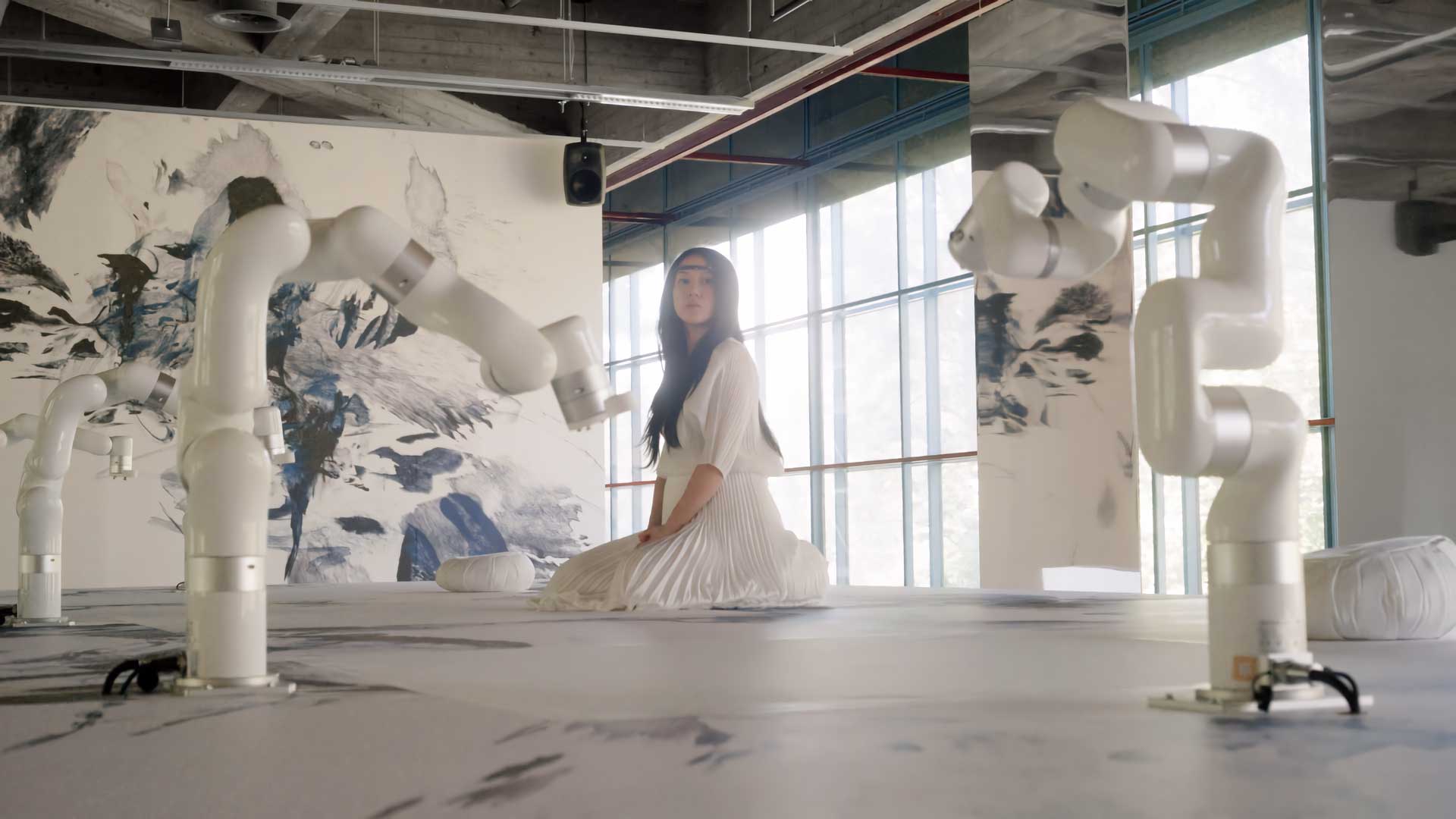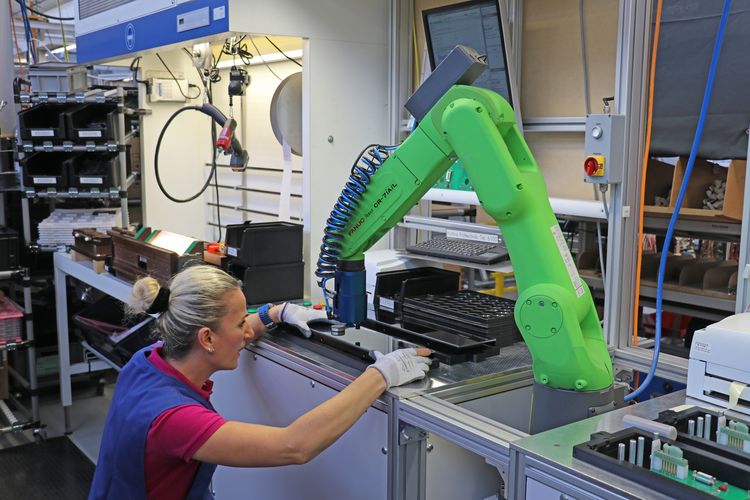Collaborative robotics, also known as cobots, are robots designed to work alongside humans in a shared workspace. They are designed to be safe, easy to use, and flexible, and they can perform a wide range of tasks, from manufacturing and assembly to logistics and healthcare. In recent years, there has been a surge of interest in collaborative robotics, with many companies developing new cobot models and technologies. In this article, we will explore the latest trends in collaborative robotics and the companies that are leading the way.
Trend 1: Integration with AI and Machine Learning
One of the most significant trends in collaborative robotics is the integration of artificial intelligence (AI) and machine learning (ML) technologies. By combining AI and ML with cobots, companies can develop systems that can learn from their environment and improve their performance over time. For example, a cobot equipped with AI and ML could learn how to assemble a product more efficiently by analyzing data from previous assembly jobs and adjusting its movements accordingly.
Trend 2: Dual-Arm Cobots
Another emerging trend in collaborative robotics is the development of dual-arm cobots. Unlike traditional cobots, which typically have one arm, dual-arm cobots have two arms that can work independently or in coordination with each other. This makes them ideal for tasks that require more dexterity and flexibility, such as packing, palletizing, and sorting.
Trend 3: Mobile Cobots
Mobile cobots are another trend that is gaining traction in the collaborative robotics market. These cobots are equipped with wheels or tracks that allow them to move around a workspace and perform tasks in different locations. This makes them ideal for applications such as logistics and warehousing, where they can transport goods and materials between different areas of a facility.
Trend 4: Sensing and Perception
Sensing and perception technologies are also playing an increasingly important role in collaborative robotics. By equipping cobots with sensors and cameras, they can detect and respond to changes in their environment, such as the presence of humans or obstacles. This makes them safer and more flexible, and allows them to work more closely with human operators.

Source: Sougwen Chung artist using collaborative robots
Trend 5: Cloud-based Robotics
Finally, cloud-based robotics is another trend that is beginning to emerge in the collaborative robotics market. With cloud-based robotics, cobots can access and share data and software through the cloud, making it easier to update and maintain them remotely. This also enables companies to deploy and manage cobots more efficiently, and to collaborate on projects with other companies and partners.
Companies producing collaborative robots have been actively involved in these trends.
ABB Robotics has been active in the trend of human-robot collaboration, with their YuMi dual-arm cobot featuring a patented safety design that allows it to work alongside humans without the need for safety barriers. ABB has also been involved in the trend of sensing and perception, integrating vision and force sensing into their cobots to improve their ability to interact with their environment.
KUKA Robotics has been active in the collaborative robotics market for over 10 years. Their LBR iiwa cobot has been active in the trend of sensitive robots, featuring integrated torque sensors in each joint that allow it to detect and respond to contact with its environment in a gentle and precise manner. New KUKA iisy is even more intuitive to operate and set up. KUKA has also been involved in the trend of mobile cobots, developing a mobile platform called KUKA flexFELLOW that allows their cobots to be transported to different workstations.
Universal Robots is considered one of the pioneers in collaborative robotics and has been active in the trend of easy-to-use cobots. Their cobots are designed to be user-friendly and do not require programming skills or technical expertise to operate. Universal Robots has also been involved in the trend of sensing and perception, equipping their cobots with force sensors that allow them to detect contact with their environment.
Fanuc Robotics has been active in the collaborative robotics market for over 10 years, with their CRX cobot being active in the trend of sensitivity and safety. The CRX is equipped with a safety sensor that can detect human presence and stop the robot's movements to avoid collisions. Fanuc has also been involved in the trend of sensing and perception, equipping their cobots with vision systems that allow them to recognize and locate objects.

Mobile Industrial Robots (MiR) produces autonomous mobile robots (AMRs) for industrial use and has been active in the trend of mobile cobots. Their AMRs can be equipped with end-of-arm tools (EOATs) to perform tasks that are traditionally carried out by cobots. MiR has also developed a cloud-based platform called MiR Fleet, which allows users to control and monitor their AMRs remotely.
Clearpath Robotics produces AMRs for industrial use. Their division OTTO Motors cobot line is being active in the trend of mobile cobots. The OTTO Motors can be equipped with EOATs to perform tasks such as material handling and assembly. Clearpath has also been involved in the trend of sensing and perception, equipping their AMRs with LIDAR and camera sensors that allow them to navigate and interact with their environment.
Fetch Robotics produces AMRs for industrial use and has been active in the trend of mobile cobots. Their Fetch and Freight line of robots can be equipped with EOATs to perform tasks such as material handling and transport. Fetch has also been involved in the trend of sensing and perception, equipping their robots with LIDAR and camera sensors.
Yaskawa is a Japanese company that has been producing industrial robots for over 100 years. In recent years, they have entered the collaborative robotics market with their HC10 cobot. Yaskawa has been active in the trends of sensing and perception, as the HC10 is equipped with a force sensor that allows it to detect contact with humans and other objects. They have also integrated AI and ML into their cobots, allowing them to learn from their environment and improve their performance over time.
Techman Robot is a Taiwanese company that specializes in the development of collaborative robots for industrial automation. They have been active in the trends of dual-arm cobots and sensing and perception, as their TM robot series features a dual-arm design and is equipped with a vision system that allows it to detect and recognize objects. Techman has also developed a cloud-based platform called TMflow, which allows users to program and control their cobots remotely.
Franka Emika is a German company that produces the Panda cobot, which features a seven-axis arm and is designed to be lightweight and flexible. They have been active in the trend of integration with AI and ML, as the Panda is equipped with a torque sensor that allows it to learn from its environment and adjust its movements accordingly. Franka Emika has also developed a software platform called Franka World, which allows users to program and control their cobots using a simple graphical interface.
OnRobot is a Danish company that produces end-of-arm tools (EOAT) for collaborative robots. They have been active in the trend of mobile cobots, as their RG2-FT gripper is equipped with a force/torque sensor and can be mounted on mobile platforms such as the MiR cobot. OnRobot has also developed a cloud-based platform called OnRobot One, which allows users to control and monitor their EOATs remotely
In summary, the latest trends in collaborative robotics are shaping the way robots and humans interact in shared workspaces. Companies such as ABB, KUKA, Universal Robots, Fanuc, Mobile Industrial Robots (MiR), Clearpath Robotics, and Fetch Robotics are leading the way in this field, actively developing cobot lines that are involved in each trend. The future of collaborative robotics is exciting, with continued advancements expected in the coming years.
Did you like the article from AutomationExpo.com? Please follow us on Linkedin
Would like you like to present your company and exhibit on our leading online 24/7 industrial automation and robotics platform?


